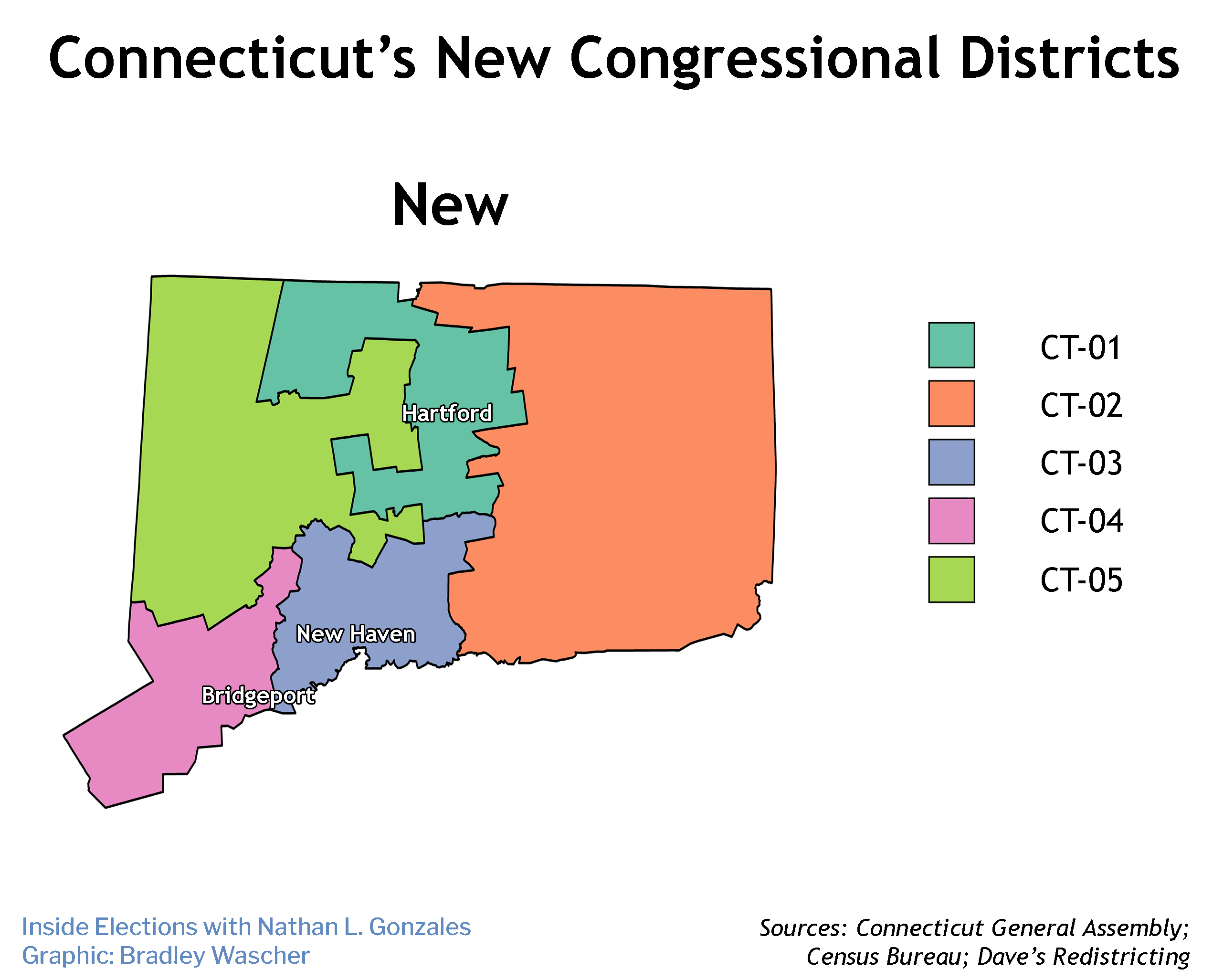In a sea of uncertainty, some things are easy to project, such as the redistricting process in Connecticut.
For the third time in as many redistricting cycles, Connecticut’s Supreme Court had to step in to draw new congressional maps after both the state legislature and a backup commission failed to reach an agreement.
Although Democrats are in full control of the Nutmeg State’s government, they do not have large enough majorities to pass a congressional map without GOP votes under state law.
Despite the drawn-out process, the map drawn by a court-appointed special master is a largely status quo update. Connecticut neither gained nor lost a congressional seat through apportionment, and population differences between the existing five districts were minimal.
Democrats have held all five seats in the delegation since 2008, and that should hold in 2022 despite significant headwinds in the national political environment. Republicans believe they can make at least one, if not two, seats competitive.

1st District
The new map alters the Hartford-anchored 1st District in just three areas: it picks up about 5,000 residents in Torrington from the Northwest Hills 5th District, it adds roughly 20,000 residents in Middletown (taken from the New Haven-based 3rd District), and it sheds roughly 21,000 residents in Glastonbury to the Eastern Connecticut 2nd District.
By partisanship, Joe Biden would have carried the district, 63-35 percent, so Rep. John Larson’s main concern is winning the Democratic primary. He faces 27-year-old Muad Hrezi, a former staffer for Sen. Chris Murphy who is waging a progressive campaign and supports Medicare for All and the Green New Deal.
Neither candidate is raising massive sums: Larson pulled in $230,000 in the first three months of 2022 and had $876,000...

